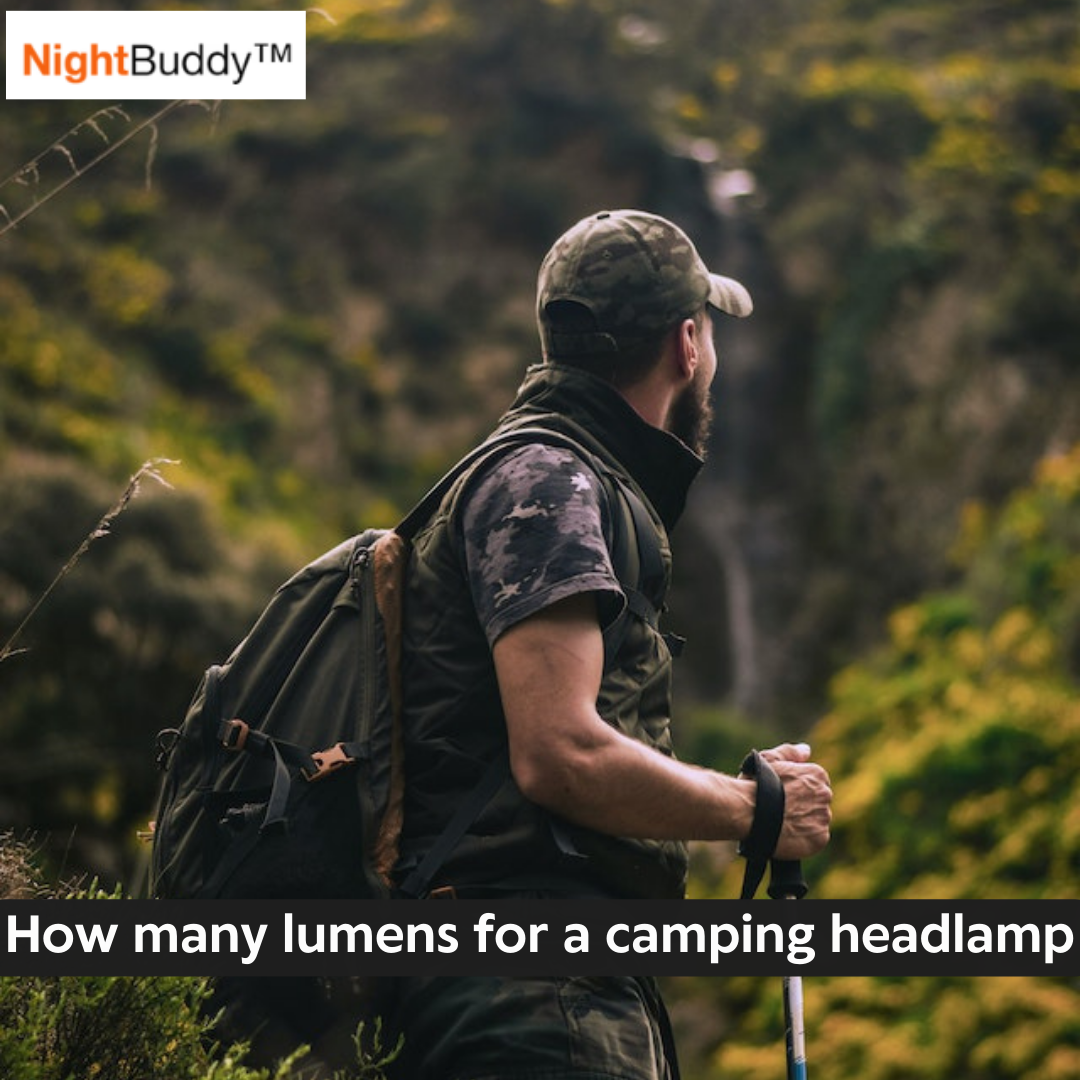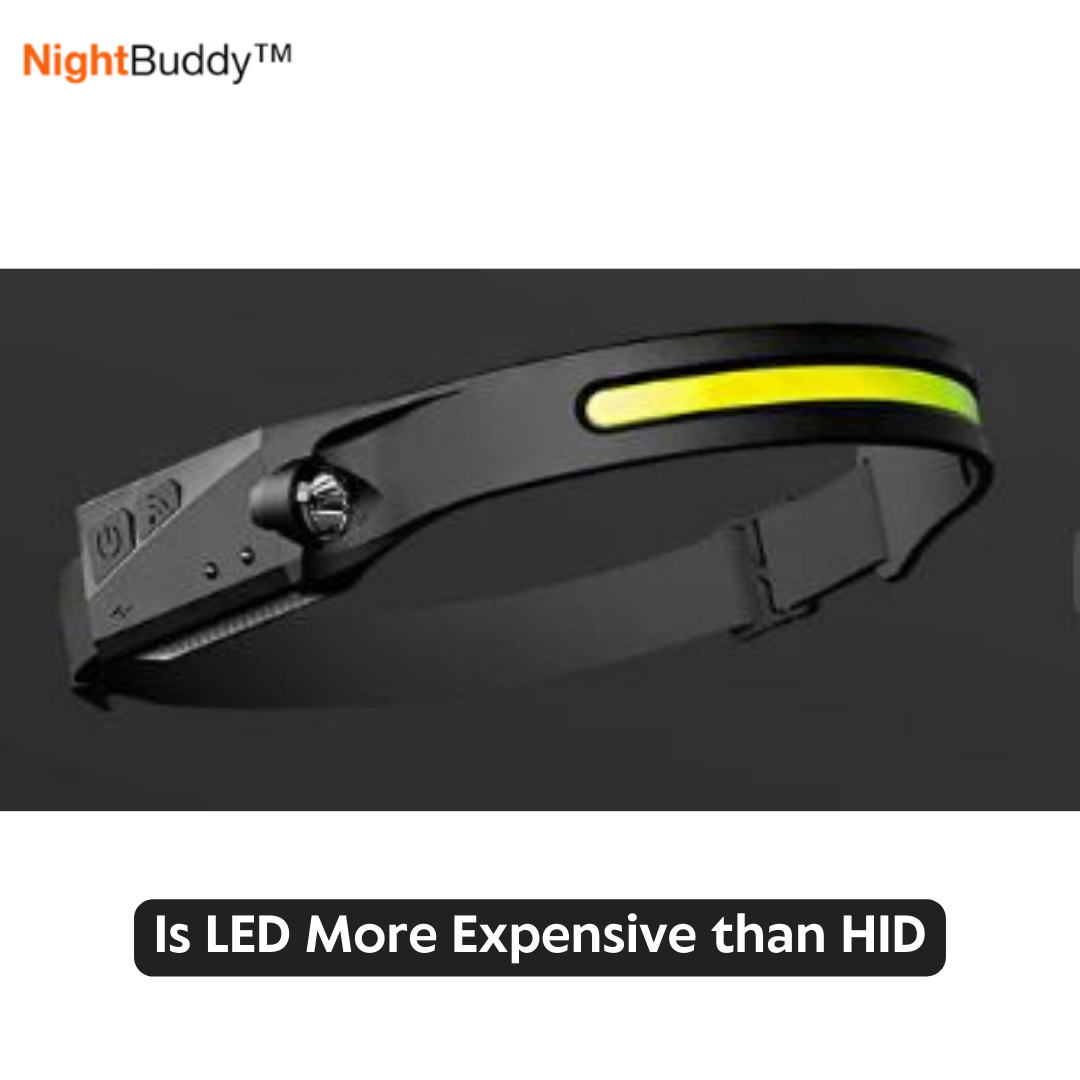Are you planning a camping trip and wondering how many lumens you need for a headlamp? Look no further! In this comprehensive guide, we will explain what lumens are, why they matter for headlamps, and how to choose a headlamp with the right number of lumens for your camping lighting needs.
Understanding Lumens and Why They Matter for Camping Headlamps
Lumens are a measurement of the amount of light emitted by a bulb or light source measured as a unit of luminous flux. They are a critical factor to consider when selecting a camping night light. Camping headlamps are essential for providing light in dark and low-light conditions, and the number of lumens determines the headlamp brightness.
When it comes to camping, the number of lumens are especially important because they impact how well and for how long you can see and navigate in the dark. A headlamp with a higher number of lumens will provide brighter and more concentrated light for long, making it easier to see your surroundings and avoid potential hazards such as rocks, roots, or uneven terrain.
Conversely, a headlamp with a lower number of lumens may not provide enough light for activities such as hiking or setting up camp in the dark, making it more challenging to see and navigate.
Additionally, the number of lumens a headlamp has can impact battery life. A brighter headlamp with a higher number of lumens will require more battery power, which means you may need to bring a bulky battery pack or a portable charger with you on longer trips. On the other hand, a headlamp with a lower number of lumens will consume less battery power and may last longer on a single charge.
Recommended Lumens for Different Camping Activities

The number of lumens needed for different camping activities can vary depending on the specific circumstances, such as the time of day, weather conditions, and terrain. However, here are some general guidelines for recommended lumens for your source of light in different camping activities:
- Setting up camp: For activities such as setting up camp you will likely only need a headlamp with 30-100 lumens. This is sufficient for providing a comfortable level of brightness without being too intense.
- Hiking and walking: Some people like hiking and walking while camping. If you will be hiking or walking in the dark, a headlamp with 100-300 lumens is recommended. This will provide enough brightness to see your surroundings clearly and avoid potential hazards such as rocks or uneven terrain.
- Trail running: For more intense activities such as trail running, a headlamp with 200-400 lumens is recommended. This will provide enough brightness to see the trail ahead clearly and react quickly to obstacles. A good example is the NightBuddy™ 230º LED Headlamp which offers a powerful 350 lumens.
- Climbing and caving: For activities such as night hiking or caving, where you will need to navigate in complete darkness, a headlamp with 400-1000 lumens is recommended. This will provide an intense beam of light to illuminate your path and surroundings.
- Cooking and Eating: For cooking and eating, a headlamp with 50-100 lumens is recommended. This will provide enough brightness to see your food and cooking equipment, but not so bright as to disturb the ambiance of the campsite.
- Reading in Your Tent: If you want to read in your tent, a headlamp with 30-70 lumens is recommended. This will provide enough visible light to read comfortably without being too bright to disturb others in the tent.
It is important to note that the recommended lumens for each activity are just general guidelines and may vary depending on personal preference and specific conditions. For example, if you have poor eyesight or will be camping in an area with a lot of obstacles, you may want to consider a headlamp with more lumens than the recommended range.
Read more: How Bright Is a 1000 Lumen Flashlight?
Factors to Consider When Choosing Lumens for Your Camping Headlamp
When selecting the number of lumens for your camping headlamp, there are several factors to consider. These factors include the type of camping you will be doing, the size and weight of the headlamp, and the battery life.
#1. Consider the type of camping you will be doing
Different camping activities require different levels of brightness. For example, if you will be hiking in the dark, you may want a headlamp with a higher number of lumens, such as 150-300 lumens, to provide enough brightness to see your surroundings clearly.
On the other hand, if you will be cooking or eating, you may only need a headlamp with 50-100 lumens, as you will not need as much brightness. If you would also engage in hunting activities, you would choose a conducive headlamp.
#2. Consider the size and weight of the headlamp
A higher number of lumens often means a larger and heavier headlamp, which may not be ideal for longer trips. If you will be carrying the headlamp for long distances or for an extended period, you may want to choose a headlamp with fewer lumens to reduce weight and improve portability.

#3. Consider the battery life
A powerful headlamp with higher lumens requires more battery power, so you may need to bring extra batteries or a portable power bank. Make sure you choose a headlamp with a battery life that will last for the duration of your trip. Some headlamps also offer adjustable brightness settings, which can be useful for conserving battery power and extending battery life.
#4. Personal preference
It's also important to keep in mind that personal preference and specific conditions of your trip may require more or fewer lumens than the general guidelines mentioned above. For example, if you have poor eyesight or will be camping in an area with a lot of obstacles or uneven terrain, you may want to consider a bright headlamp with more lumens than the recommended range.
Other Features to Look for in a Camping Headlamp
Aside from lumens, there are several other important features to consider when choosing the perfect headlamp as highlighted below:
Beam Distance
The beam distance refers to how far the headlamp can project light at its brightest mode. This is important for activities such as hiking or trail running, where you need to see far ahead. A longer beam distance is also useful for signaling or locating others in the dark. Look for a headlamp with a consistent beam distance of at least 50 meters for most camping activities.
Battery Life
The battery life is an important consideration, especially for longer camping trips. A headlamp with a longer hour run time will allow you to use it for longer periods without needing to change replaceable batteries or recharge.
Look for a headlamp with a decent battery life of at least 10-20 hours on low mode, or consider bringing extra batteries or a portable charger for rechargeable batteries if you plan to use the headlamp for extended periods of time.
Durability
A camping headlamp needs to be durable and able to withstand the tough conditions that come with outdoor adventures. Look for headlamps with rugged construction, waterproofing, and resistance to impact and abrasion. A headlamp with an IPX rating of at least IPX6 is recommended for camping trips, as it will provide protection against water splashes and rain.
Comfort
A headlamp that is uncomfortable to wear can quickly become a nuisance on a camping trip. Look for headlamps with adjustable straps, lightweight materials, and a comfortable fit. A headlamp with a padded strap and an adjustable band will ensure a secure and comfortable fit, even during extended outdoor adventures.
Red Light Mode
A red light mode can be useful for preserving night vision and avoiding disturbing others around the campsite. Look for headlamps with a red light mode in addition to white light modes. Red light is less disruptive to your eyes and will not interfere with your night vision, making it useful for activities such as stargazing or walking around the campsite at night.
Adjustable Brightness levels
A headlamp with adjustable brightness settings can be useful for conserving battery power and adapting to different lighting conditions. Look for a headlamp with at least two or three light levels, allowing you to adjust the brightness to suit your needs.
Weight and Size
Consider the size and weight of the headlamp, especially if you plan to carry it for long distances or for an extended period. Look for headlamps that are compact and lightweight, making them suitable for backpacking trips. A headlamp weighing between 3 to 6 ounces is ideal for most backpacking trips.
Water Resistance/Waterproof Rating
Water resistance is an important feature to consider when choosing a camping headlamp. Camping can involve exposure to rain, snow, and other moisture. A headlamp with decent water resistance can protect the internal components from water damage and ensure the headlamp continues to function properly.
Camping headlamp lighting modes

In addition to adjustable brightness and red light modes, many camping headlamps also offer different lighting modes. Here are some common lighting modes to look for in a camping headlamp:
- Spot Mode: The spot mode projects a focused beam of light in one direction, allowing you to see further ahead and focus on a specific area. It's ideal for activities such as hiking, trail running, or reading.
- Flood Mode: Headlamps with the flood mode project a wider beam of light, illuminating a larger area in front of you. This mode is useful for activities such as cooking, setting up camp, or searching through your backpack.
- Strobe Mode: When in use, the strobe mode flashes the light on and off rapidly, making it useful for signaling or emergency situations. It can attract attention from a distance and is ideal for when you need to signal your location to others.
- SOS Mode: This mode flashes the light in a pattern that spells out "SOS" in Morse code. The SOS mode is a universal distress signal and can be useful for emergency situations where you need to signal for help.
- Lockout Mode: The lockout mode is important as it prevents the headlamp from accidentally turning on in your pack or pocket, saving battery life and preventing damage. It is ideal for when you're carrying the headlamp in your backpack or luggage.
Factors that can contribute to the overall brightness of a camping headlamp
Lumen Range
Lumens are a measure of the total amount of light emitted by a headlamp. The higher the number of lumens, the brighter the headlamp. However, it's important to note that a headlamp with a very high lumen rating may not necessarily be the best choice, as it could drain batteries quickly and be too bright for some activities.
LED Technology
LED technology used in a headlamp can affect its brightness. Modern LED light is more efficient than the previous version, meaning it produces more brightness while using less energy. Look for a headlamp with advanced LED technology to ensure you get sufficient bright light. However, LED comes at an extra cost.
Beam Type
The light beam type of a headlamp can also affect brightness. A spot beam/narrow beam will generally be brighter at longer distances than a flood beam or wide beam, which is more diffuse and covers a wider area. However, a flood beam can still be bright enough for most camping activities, especially if it has a high lumen rating.
Battery Type and Quality
The type and quality of batteries used in a headlamp can impact brightness. Lithium batteries, for example, are generally more efficient and produce a brighter light than alkaline batteries.
Additionally, high-quality batteries will generally last longer and produce brighter light over a longer period of time than cheaper, lower-quality batteries. Cheaper batteries might force you to carry external battery packs with spare batteries.
Temperature
Temperature can affect the brightness of a headlamp. Cold temperatures can reduce the overall brightness of a headlamp, as the batteries may not work as efficiently in cold conditions. Warm temperatures, on the other hand, can increase the brightness of a headlamp, as the batteries may work more efficiently.
When choosing a camping headlamp, consider these factors to ensure you choose one that is bright enough for your needs. Look for a headlamp with a high lumen rating, advanced LED technology, a suitable beam type, and high-quality batteries. Keep in mind that the light quality of a headlamp can also be affected by external factors, such as the environment and temperature.
Final Thoughts
Choosing the right lumens for your camping headlamp is important for ensuring you have the right amount of light for your activities. Factors such as the type of activity, the environment, and the desired level of brightness all play a role in determining the appropriate lumen rating.
Additionally, other features such as beam type, battery life, and water resistance should also be considered when choosing a camping headlamp.
By considering these factors and choosing a headlamp that meets your needs, you can ensure that you have a reliable and effective source of light for dark conditions. Whether you're cooking, reading, hiking, or setting up camp, a good camping headlamp is an essential piece of gear that will help you enjoy your time in the great outdoors.





Leave a comment
This site is protected by hCaptcha and the hCaptcha Privacy Policy and Terms of Service apply.